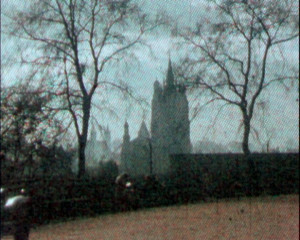
‘"The logo for Dufaycolor is at the head of the film. The subject matter was chosen to show off the process of the film stock's built-in colour filters" (EAFA Database).
"endeavouring cinematically to depict the freedom of the open air as a contrast to the mechanised life of the city during the working week. The treatment in the hands of Mr. S. Sharples was a departure from the usual run of films, as there was exploitation only of natural media and no particular caste was featured. By rapid acceleration and accurate timing of sequences the effect of stimulation and movement was produced. This film was submitted to Mr. J. Grierson, of “Drifters” fame, and in a very candid criticism of it he wrote “… one of the most intelligent amateur films I have seen" (Anon 1931: 183).
"Groups of people assemble in town, meeting and chatting on the street. At the beach, women feed the seagulls, go on a fairground boat ride, and they feed chips to the gulls both on the beach and from a wooden pier, A family assemble in the garden - the girls are wearing school uniform - and sit together. There is a shot of horned cattle in a field, and there is a garden where an old man mows his lawn, while a very old man receives a buttonhole. The location shifts to a clifftop walk. In what seems like an earlier period, very formally dressed people play with a small child, and sit in deckchairs" (NWFA Online Database).
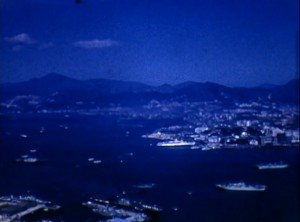
"Hansen travels to Hong Kong following his original visit to China in 1937. Initially, he spends much of his time roaming the commercial districts, giving a sense of tourism side of Hong Kong. Immediately following, he spends several minutes focusing on the skyline and captures footage of locations on the outskirts of the city. Hansen then spends the rest of the evening eating at a local cuisine and attending a show. For the remainder of his trip, Hansen shifts his attention from Hong Kong's tourist areas to the residential districts, fishing docks, and rural farming." UC San Diego Library.
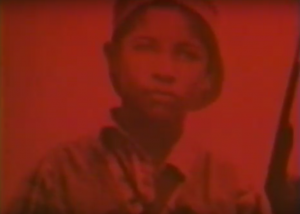
"En Patria Libre, Sergio García documentó los primeros logros de la revolución sandinista en Nicaragua. [...] Se trataba de un documental convencional, con una voz off (leída por Felio Eliel) sobre un momento de frescura y esperanza por el triunfo del Frente Sandinista de Liberación Nacional. El arranque del documental con una serie de imágenes de Sandino en alto contraste que culminan en la foto de un adolescente guerrillero (mientras que en la banda sonora se escucha a Pablo Milanés cantar "Los caminos") preludian el tono que se desarrollará sobre el caso de la revolución sandinista" (Vázquez Mantecón, 2012.)
"In Patria Libre [Free Country], Sergio García documented the first achievements of the Sandinista Revolution in Nicaragua. It was a conventional documentary, with an off voice (read by Felio Eliel) about a moment of freshness and hope because of the triumph of the Sandinista National Liberation Front. The documentary begins with a series of highly contrasted images of Sandino that end with the picture of a guerrilla teenager (while the soundtrack plays "Los caminos" [The roads] by Pablo Milanés), which is a prelude to the tone that will be used to describe the Sandinista Revolution" (Vázquez Mantecón, 2012).
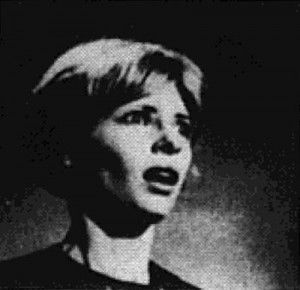
"The audience, aided by the perspective eye of the motion picture camera, watches the converging paths of unrelated people. Gently, their separate activities draw them together briefly, to touch, and then send them on their separate ways again. A thoughtfully produced and completely enjoyable film that uses the best of the film-makers art. the skillful use of music as the "narrator" of the story brought to the maker of the film the George Cushman Trophy for the most effective use of sound on film" PSA Journal, Oct. 1963, 41-42.
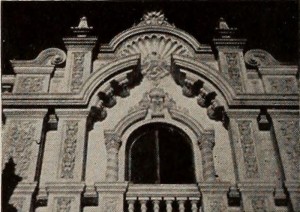
"Item is a film production of Dr. and Mrs. Willinsky's trip to Lima, Peru to attend the 5th International Assembly of the International College of Surgeons. Footage of assembly delegates, landmarks and the local population are interspersed with captions added by Dr. Willinsky. Included are scenes of assembly delegates near Lima's Workman's Hospital, Sadie visiting the home of the assembly's chairman and entering the palace of Peru's president for a luncheon, sights along the streets of San Martin, cathedrals, shots taken from a moving train, and images of the Ricmac River from a nearby road." Ontario Jewish Archives.
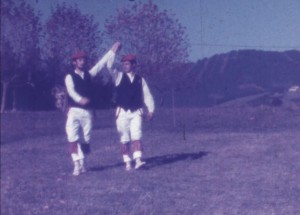
La primera parte de la película recoge la historia pasada de Bizkaia y el País Vasco a través de sus pueblos. En cada pueblo se realiza una narración relacionada con la historia de ese lugar y su contexto en relación a Bizkaia.
The first part of this film tells the past story of Biscay and the Basque Country by depicting its towns. Each town has a narration, related to that place's history and to its context relating it to Biscay.
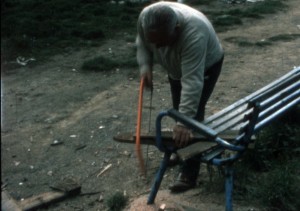
Segunda parte de la película que, partiendo del año1975, plantea qué ha sido de quienes perdieron la guerra. El filme habla de opresión, el mundo del trabajo, la evolución de los pueblos y los problemas que enfrentan.
The second part of the film starts in 1975, and tells the story of those who lost the war. The film speaks of oppression, the job market, the evolution of towns and the problems they face.
"Item is a double feature production of a trip Dr. Willinsky took to Portugal and Morocco with his wife, Sadie. In the form of a travelogue, footage of landmarks, landscapes, vegetation, historic sites and the local population is interspersed with maps and captions that were added in by Dr. Willinsky to provide context. Featured cities include Lisbon, Tangier, Casablanca and Villa Daressada. Sadie is occassionally spotted sight-seeing, interacting with locals and purchasing wares from street vendors." Ontario Jewish Archives.
Total Pages: 15